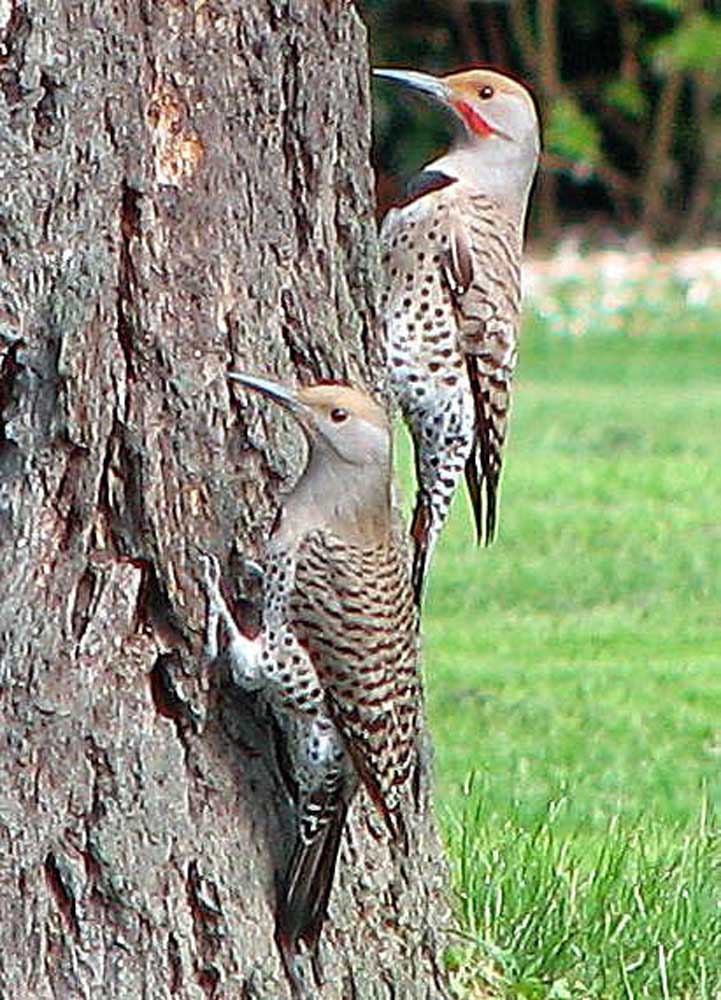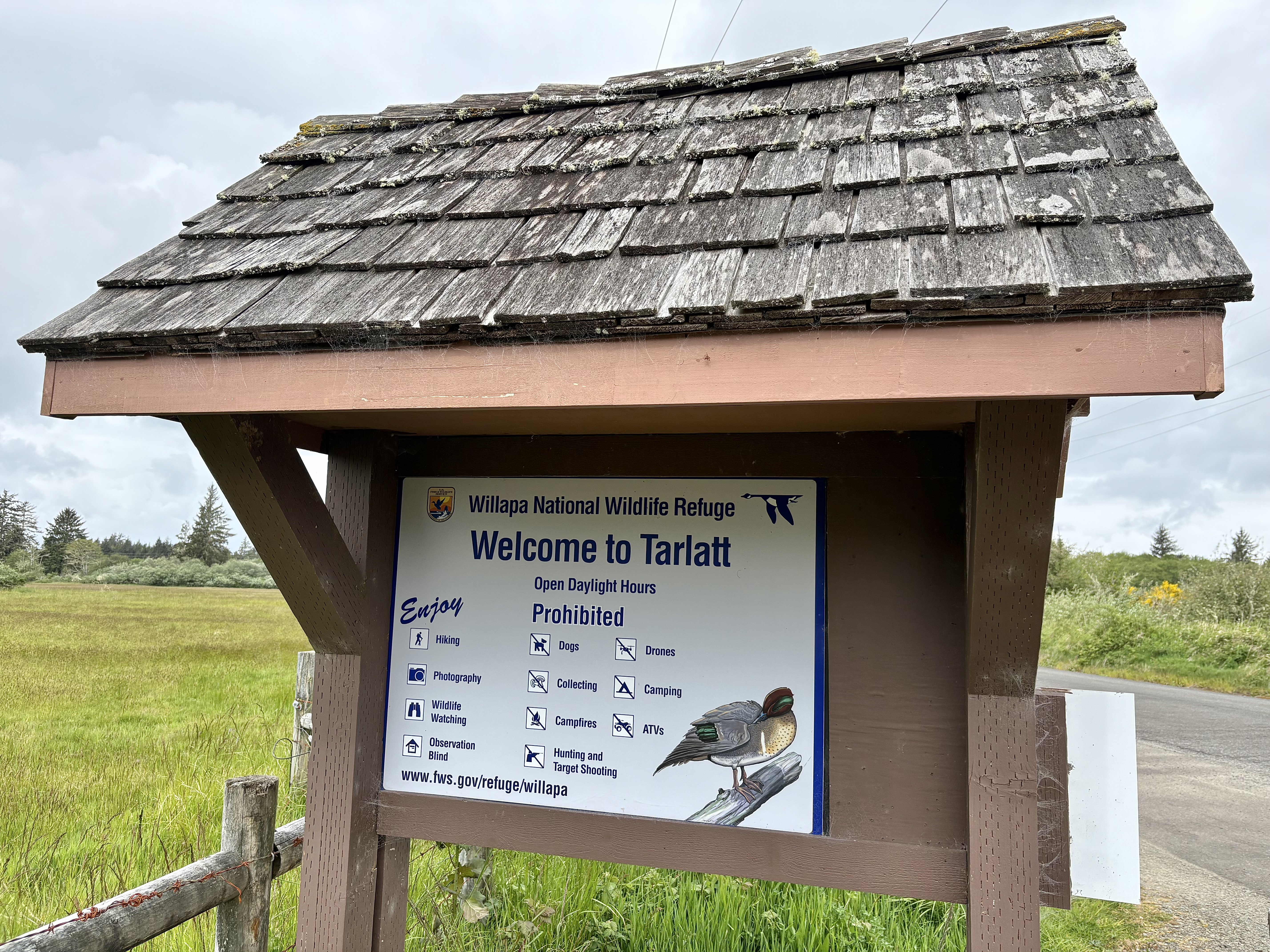Northwest Nature Log In light of recent Peninsula events, what is a ‘keystone species’?
Published 10:38 am Tuesday, February 23, 2016

- Red-shafted northern flicker: female, left, and male.
Anyone who checks out backyard birds here on the Peninsula is familiar with the big, red-mustachioed flicker, swooping over the lawn calling wik-a-wik-a-wik-a.
Trending
It’s one of the best-known and best-loved birds on our Peninsula, and is properly called red-shafted northern flicker. Well, not always best-loved, as the male flickers are some of the culprits who use the sides of houses and metal buildings to hammer out their notice of readiness to mate in the spring. It can be nerve-rattling, as the male usually begins relatively early in the day. It’s self-limited though; as soon as a female flicker shows her interest, they move on to more important issues.
The male sports that bright malar stripe, or mustache, and both sexes have a large black medallion across a buffy spotted chest. When a flicker flies, the under-wings light up a brilliant orange-red. The eastern U.S. species is “golden-shafted”: gold on the under-wings. If you get into the area of the U.S. where they both live, you will find cross-breeds showing a color between the red and gold.
Flickers are common here and can be seen on the ground, digging for worms and grubs. Seems odd for a woodpecker, but they do glean much of their food on the ground.
Trending
“Keystone species” is the description given to species who support other species in some way, like a keystone brick keeps an arch from collapsing.
Flickers are cavity-nesters. They excavate a nest cavity every year, and they go all out- they make it bigger than the flicker family will need. It’s not known why they do this, but it’s a good thing. Flickers drill a new nest cavity every year, leaving the old cavity for others who need such a place to raise young and shelter.
Here is a partial list of the birds and critters who use flicker cavities: Douglas squirrels, flying squirrels, short-tailed weasels, American kestrels, chickadees, western bluebirds, tree swallows, buffleheads, northern saw-whet owls and western screech-owls.
According to Paul Bannick, in his book “The Owl and The Woodpecker,” “…of the more than 80 species of birds in North America that nest in cavities, roughly 25 percent can be found in the Pacific Northwest, and many of these nest only in woodpecker holes. In the Pacific Northwest, almost one third of all forest vertebrate species nest or roost in cavities and most are obligate cavity nesters, meaning they have no other choice. The vast majority of cavities are the work of woodpeckers.” (My italics and bold type.)
Flickers are flexible hunters and utilize open areas in which to forage. However, they are not as flexible in their need for living quarters. They do require large dead trees and big branches on large live trees on which to hammer out a nest.
The flicker population has diminished 30 percent over the past 40 years. Fewer trees means fewer birds. Fewer birds means fewer nesting cavities.
As we watch our tree population steadily diminish on the Peninsula, we must realize that we are not the only utilizers. By bringing down all the trees, not even leaving the dead ones standing, we are clearly imperiling not only a woodpecker, but all of the other critters who depend on this “keystone” bird for shelter in the future. And this is just one example of the impact of removing a large body of trees, even though they are second- or third-growth.
Huge, overwhelming clear cuts are big business these days. Trees are seen only as a crop by many.
Looking to the future seems to be the optimistic thing to do.
Some ideas: become involved in the plan for the future of our home here; do our homework and make our voices heard in a positive and constructive way. At home, leave a safe portion of dead trees (so they won’t fall on the house). Birds will not only use these trees as homes, they will glean insects from the bark and trunk. Plant native trees. Put out nest boxes. Feed good quality bird seed — skip the cheap millet. Hang suet feeders and you will likely see a flicker hanging comically, trying to get a good hunk before swooping away.
Let us not be the generation who pulls loose that keystone.









